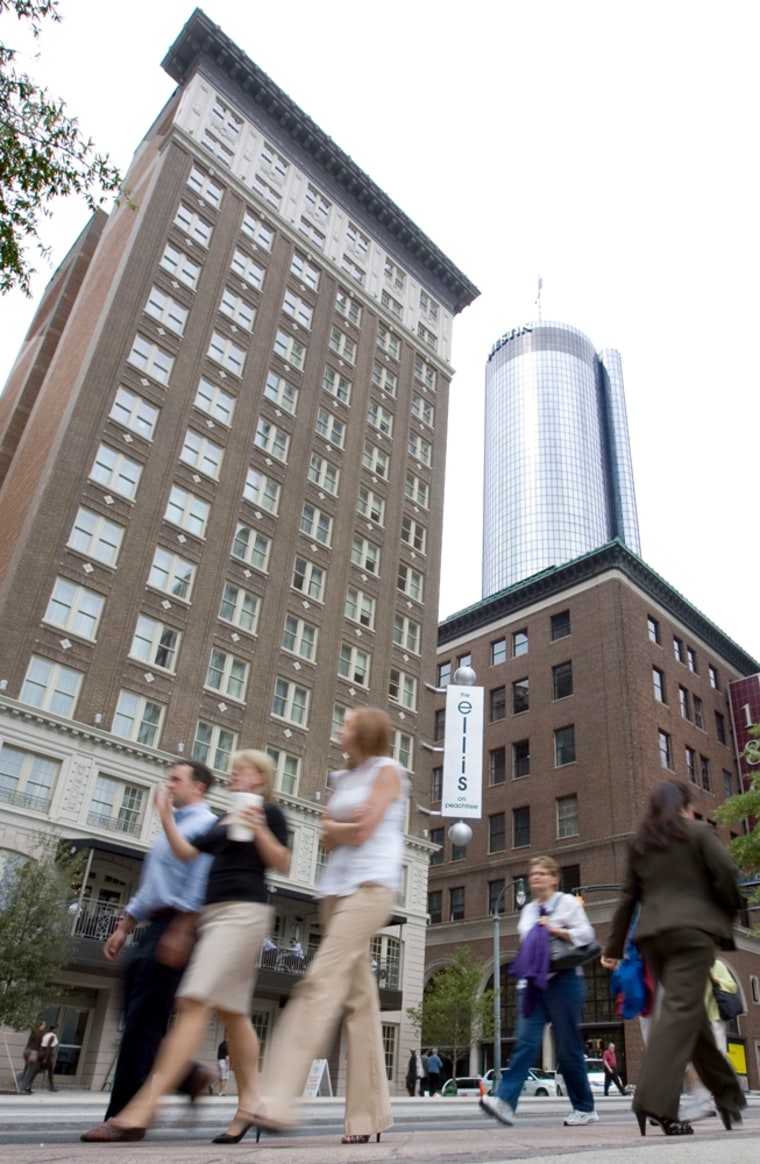Elaine Hernando planned to stay in one of the city's big-box hotels, but when she saw The Ellis, she canceled her reservation and booked a room at the renovated historic hotel instead.
On the outside, the 15-floor hotel retains its stately 1913 architecture, complete with a traditional open-air balcony on the second floor that was a must for elegant Southern hotels in the era before air conditioning.
Inside, however, the hotel rooms boast 21st century comforts, including plush beds, flat-screen TVs and even a place to play music from iPods.
"I really like boutique hotels — we travel a lot for work," said Hernando, a 30-year-old sales representative from Los Angeles. "I loved being there — the windows have a really great view; the iPod dock, that was cool."
Across the country, hoteliers are seeking to breathe new life into older properties.
Detroit's Book-Cadillac Hotel — built in 1924 — is being restored to open late next year as the 455-room Westin Book Cadillac Detroit. In its glory years, the hotel hosted Presidents John F. Kennedy and Harry S. Truman, but it stood vacant for more than two decades before the renovations began.
The spacious lobby of Oklahoma City's Skirvin Hotel became a place where oil tycoons met politicians after it was built in 1911. It also sat empty for nearly 20 years until February when it reopened after a $55 million renovation as the Skirvin Hilton, complete with 29 hand-carved Bacchus busts, accented by gold leafing, that peer from the hotel's pillars.
In Seattle, a $10 million renovation was just completed for the century-old Alexis Hotel and in Boston, the Charles Street Jail — built in 1851 and once tagged by officials as "unfit for human living" — is now The Liberty Hotel.
"There's a trend, generally in the travel industry, for people wanting to make every part of their trip a unique experience and I think hotels are really responsive to that by providing ... a little more personality and a unique experience," said Peter J. Frank, editor-in-chief of the luxury travel Web site concierge.com.
Frank said the renovations also provide a new look for the hotels, which are trying to attract luxury customers. Rooms in The Alexis Hotel, which was built in 1901, for example, feature stainless steel four-poster beds, rococo mirrors, 300-thread-count sheets and high-definition televisions.
Before Atlanta's Ellis hotel underwent a $28 million renovation and reopened for business in October, the building had been vacant for a few decades, never able to shake its image as the site of the deadliest hotel fire in U.S. history. It previously was the Winecoff Hotel, where a fire erupted in 1946, killing 119 people.
But owner Susan Griffin said she saw the value of restoring a historic hotel on downtown Atlanta's famed Peachtree Street.
"We're turning a new page in history ... page one of a new story of a beautiful, stately hotel in Atlanta," Griffin said.
In Boston, the former jail had been abandoned for about a decade after previous attempts to use the space for offices failed.
"It's a great location, at the foot of Beacon Hill, one of Boston's premier residential areas," said Gary Johnson, lead architect for The Liberty Hotel project. "Most people in Boston have never set foot in the building until now."
Keeping with the history of the space, jail cells appear in the hotel's restaurants and bars and guests pass five cells on the way to the elevators. Developers, of course, brought down the jail's former 18-foot-high perimeter wall.
"Nobody's hiding the fact it was a jail. In fact, we're celebrating that," Johnson said. "The building was once a social reform place. Now it's social in the friendly sense of the word."
